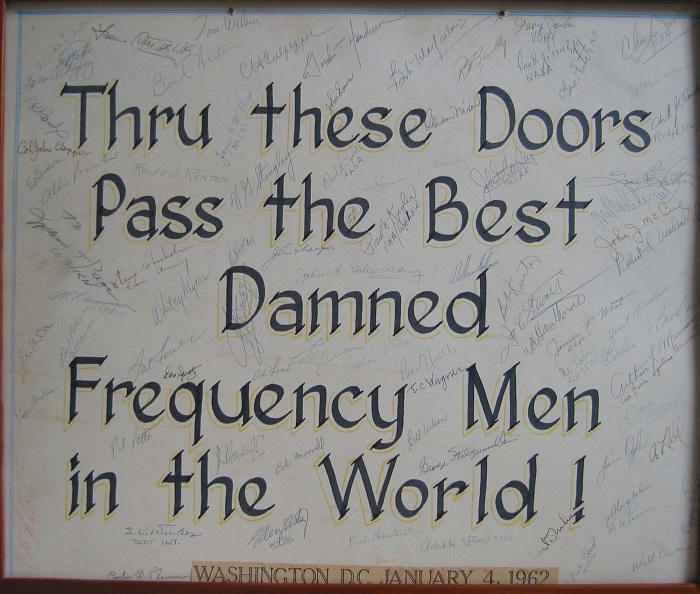
|
EARLY JOINT CANADA / UNITED STATES RADIO FREQUENCY PLANNING AND COORDINATION
We all know that the Titanic disaster highlighted the value of ship-to ship radio communications and very quickly afterwards that ship-to-shore radio communications was also recognized as being essential for ensuring the safety of life at sea. Then following Reginald Fessenden's demonstration that it was possible to transmit and receive speech by radio it did not take long for people interested in radio to establish radio stations with the objective reaching the public.
Soon broadcasting radio stations, as they came to be known, were attracting listening audiences all over North America. It was clear then and generally accepted by those engaged in this activity that radio did not recognize geographical or political borders of any kind and that some sort of arrangements were needed to ensure that broadcasting stations did not interfere with each other.
Governments were soon to become involved in regulating all kinds of radio communications known at that time. It was obvious to them that they would need to get together to plan and coordinate the use of the radio frequencies if chaos in radio was to be avoided and the future benefits of radio communications were to be realized for the public good.
Canada and the United States were quick to get started. Here is a list of the Canada/United States agreements regarding the use of radio frequencies that were signed and ratified in the beginning years of radio.
Generally these arrangements spell out such pertinent requirements as necessary frequency allotment plans, technical and operating frequency sharing criteria and finally the procedures to be followed by each administration in coordinating individual frequency assignments for licensed stations. Of course they are in accord with the ITU's internationally agreed Radio Regulations including the associated frequency allocation table. Such bilateral and regional agreements of this kind are permitted by these Regulations. Undoubtedly, in the course of time, these agreements have been revised or replaced and new agreements struck as necessary to keep up with changes in technology, spectrum congestion and new communication requirements.
Backgrounding these are important considerations such as life styles, commercial activities and interests, travel and intercommunication needs in both countries along the common east-west border since these are largely similar. So arrangements such as those covered in the above are absolutely necessary if radio is to serve both countries as it should. However, representatives of both countries also have to take into account the differences in such things as population distribution, styles of government, mutual defense needs of the two countries, radio regulatory arrangements and styles of radio spectrum management of both countries.
Resolving the many radio problems brought the radio spectrum management authorities of both countries together very frequently as you have read. Hence the representatives at these meetings got to know each other very well. This made for easy resolution of some very difficult radio problems. Proof of this spirit of togetherness and cooperation that flowed from our joint discussions over the years is evident in the following photo of a Memento signed by those of this group who took part in a conference held in Washington on October 12, 1962, the results of which are reported in item 10 above. The names (Canadian names are shown in bold print.) of those who signed includes those who took part in some of the earlier conferences the results of which are listed above.
NAMES ON THE MEMENTO. of a CANADA / UNITED STATES FREQUENCY COORDINATION MEETING held in Washington on October 12, 1962.
Ottawa, 2005. |
||||||||||||||||||||||||||||||||||||||||||||||||||||||||||||||||||||||||||||||||||||||||||||||||||||||||||||||
|
Links - Liens
|
||||||||||||||||||||||||||||||||||||||||||||||||||||||||||||||||||||||||||||||||||||||||||||||||||||||||||||||






